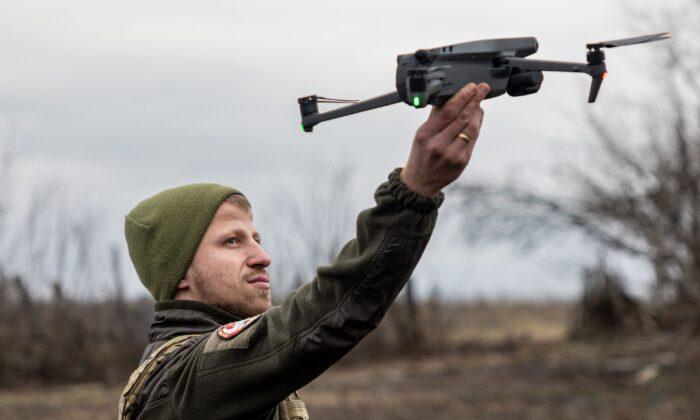The United States should adjust its strategies and programs based on the performance of the Russian and Ukrainian militaries in their ongoing struggle to avoid learning the wrong lessons for a future fight, according to one U.S. general.
By attempting to learn wholesale from Ukraine, the U.S. military could be setting itself up for failure in a conflict against China over Taiwan, said Marine Brig. Gen. Mark Clingan during an April 3 talk at the Atlantic Council, a Washington-based think tank.
“In this conflict, we have seen uncontested logistics across the Atlantic,” Clingan said.
“We may have been learning the wrong lessons.”
Clingan, who serves as deputy commanding general of Marine Corps Combat Development Command, said that the logistics which would sustain U.S. forces would be held at constant threat in a Pacific conflict.
“Logistics matters… Logistics is the pacing warfighting function,” Clingan said. “You’re going to have to fight to get to the fight.”
To that end, Clingan said the U.S. Marine Corps was undergoing a “huge modernization” effort aimed at learning the right lessons from Ukraine to apply to a potential conflict with China.
Foremost among those lessons is that the United States’ industrial base is not ready for a major conflict.
“The industrial base matters… Our production may not be sufficient for the coming conflict,” said Clingan.
“One Chinese shipyard can produce in one year more ships than all of ours combined.”
Similarly, Clingan said that the United States would need to do a better job of preparing its society for the realities of war.
“Depots, ports, and airfields will be targeted,” Clingan said. “...Civilians will need to be prepared for war.”
Integration of New Technologies Place All at Threat
Another critical implication learned from ground combat in Ukraine is the premium that the modern military must place on “the ability to integrate new technologies,” said T.X. Hammes, a distinguished research fellow at the National Defense University.One example of this, Hammes said, was the decision of the Army and Marines to pursue experimentation with using drones to direct machine gun fire and grenade launchers.
“The real payoff [learning drone warfare from Ukraine] has been adjusting fires and providing intelligence to commanders,” Hammes said.
Due to the “pervasive surveillance” offered by commercial satellites and drones, he added, the benefit of drones was hard to overstate. As such, the United States should work to integrate drones, precision munitions, and loitering munitions to hunt and kill hostile targets in the next war.
“For the price of one M1A2 [tank], you could have 1,000 Drone 40s,” Hammes said, referring to a popular military drone used for reconnaissance and attack.
“How do you maneuver, and how do you resupply if there’s 1,000 active hunters in the sky above you?” Hammes said.






Friends Read Free